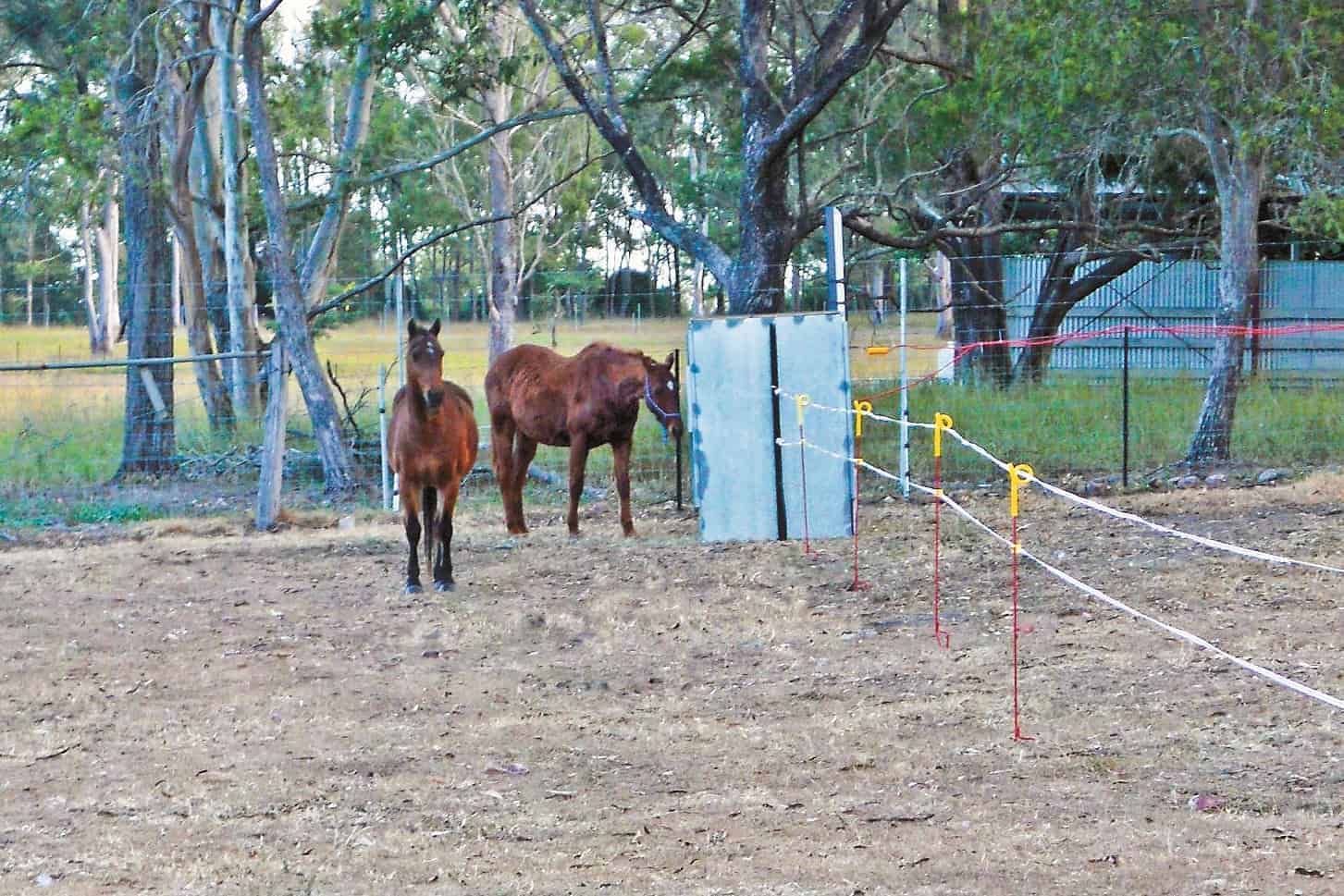Study: Fat Ponies Will Work for Food

But it turns out, some ponies might be willing to work themselves … as long as there’s food involved. In an innovative study, researchers in Australia tested a novel dynamic feeding device and studied whether exercise alone could effectively decrease body fat.
Melody de Laat, PhD, BVSc, of the Queensland University of Technology, in Brisbane, and colleagues employed eight mixed-breed ponies with body condition scores (BCS) of five or greater (on a 9-point scale). The ponies consumed diets including lucerne (alfalfa) hay fed at 2% of body weight and a vitamin-mineral supplement divided into two meals. The researchers housed the ponies in individual drylot paddocks, each of which contained a custom-made dynamic hay feeder with two sliding doors that opened alternately on each side for five minutes. This allowed the ponies access to hay set in an internal hayrack, but required them to walk to the other side to continue feeding.
The team collected data on each pony when the dynamic feeder was on (alternating doors) and off (one door open, not forcing movement). De Laat and colleagues used GPS tracking devices to measure how far the ponies traveled each day. They also determined the ponies’ body weight, BCS, cresty neck score (CNS), and insulin sensitivity before and after each treatment phase. They collected percent body fat data only during the “feeder on” treatment
Create a free account with TheHorse.com to view this content.
TheHorse.com is home to thousands of free articles about horse health care. In order to access some of our exclusive free content, you must be signed into TheHorse.com.
Start your free account today!
Already have an account?
and continue reading.
Written by:
Kristen M. Janicki, MS, PAS
Related Articles
Stay on top of the most recent Horse Health news with















